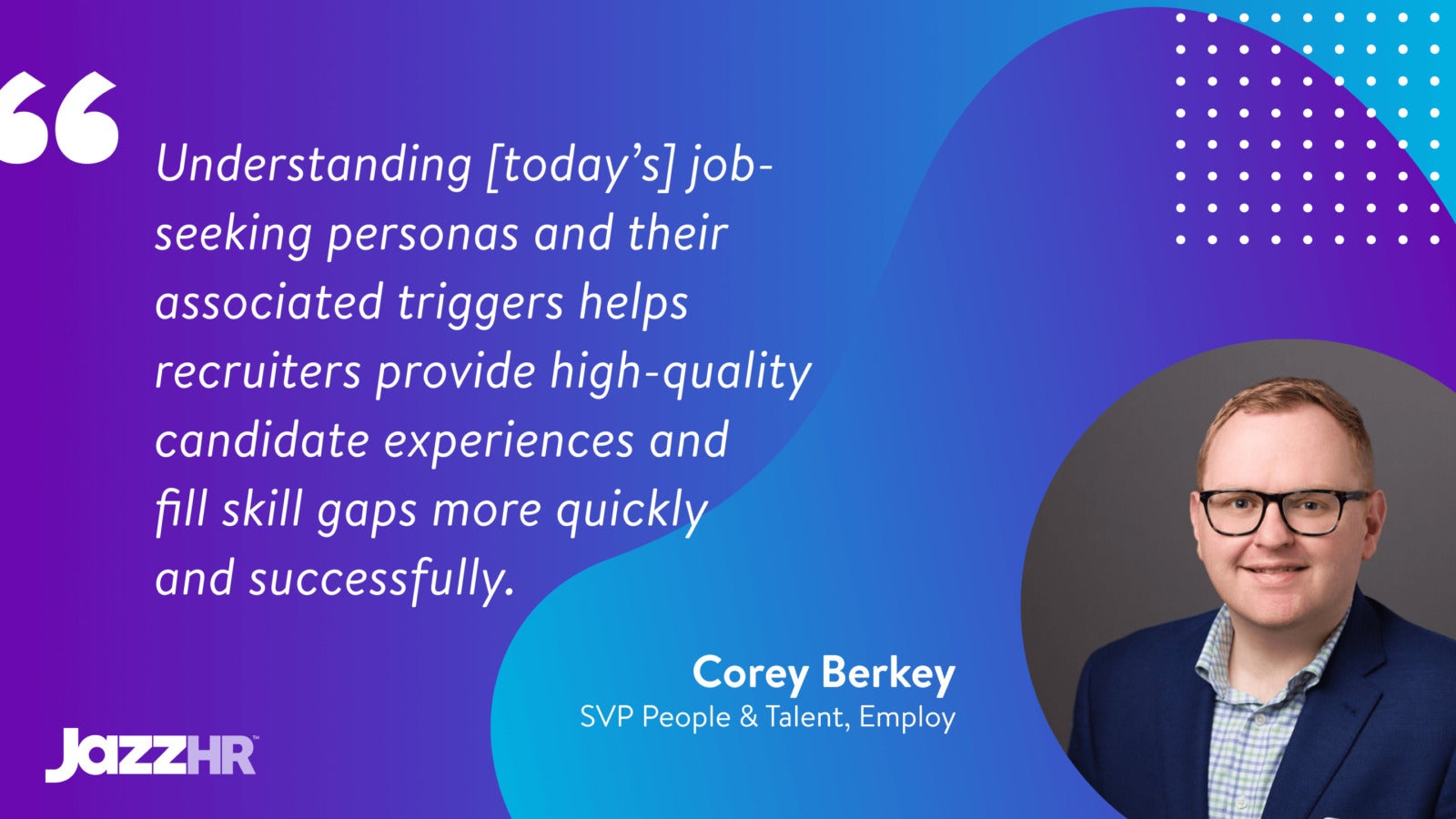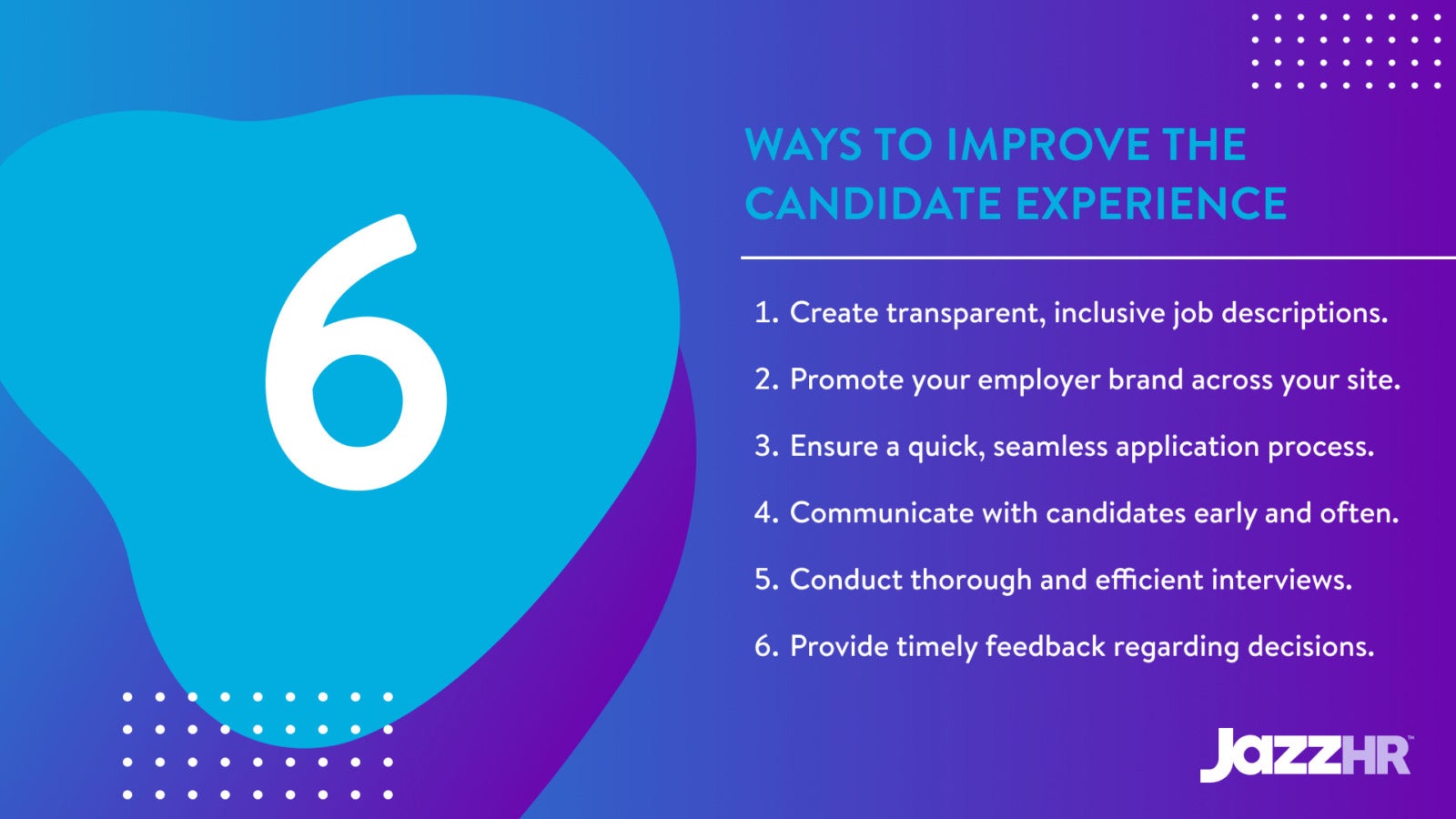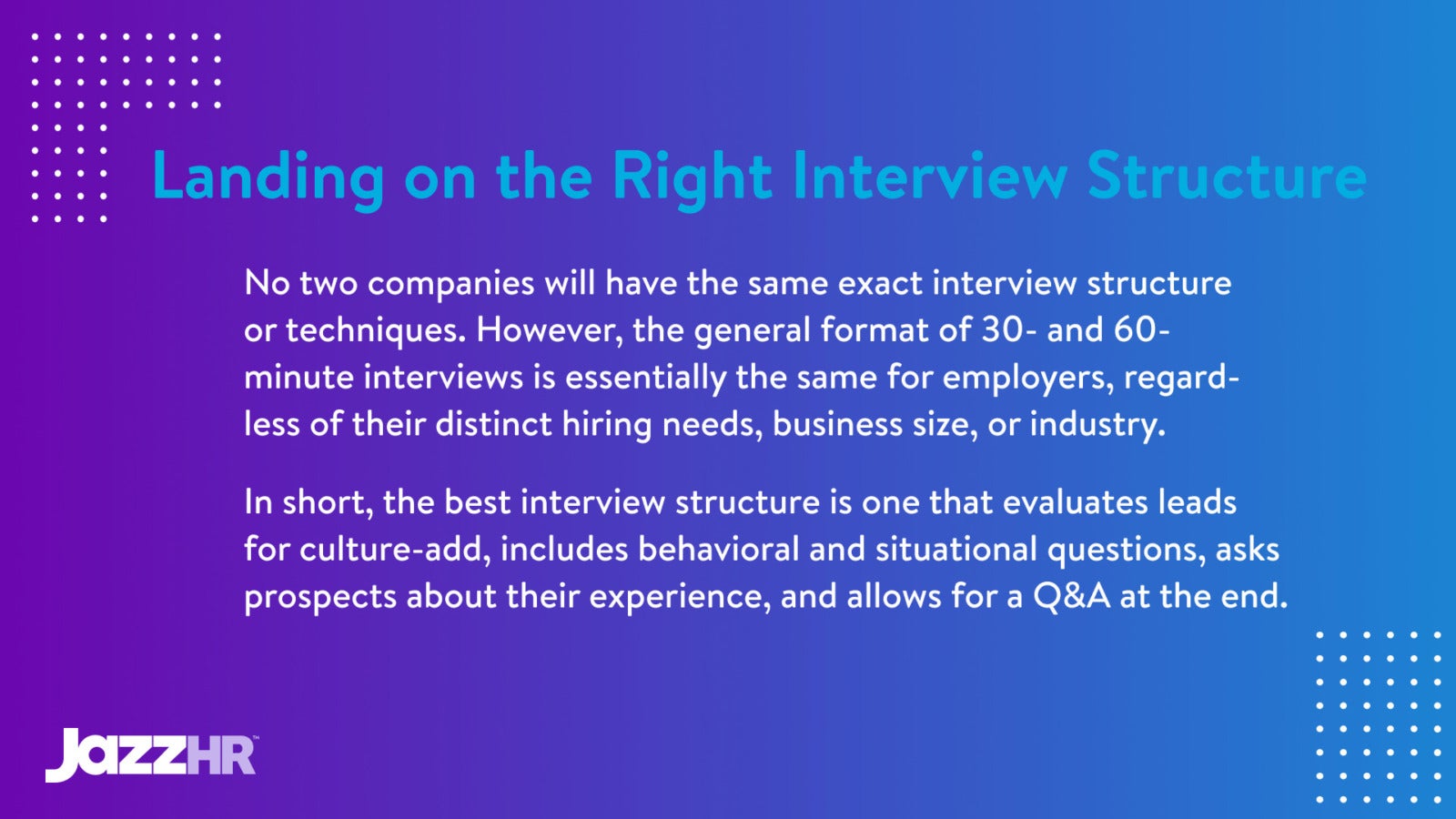Candidate experience is important to the success of your recruitment processes. In short, it’s the sum of everything a job seeker encounters while engaging with your small business during a job search.
There are four ways to look at candidate experience today:
- A truly poor candidate experience can be damaging to your employer brand in the long term.
- A bad candidate experience can simply be a turnoff for prospective hires you engage for roles.
- A good candidate experience can greatly influence an individual’s decision to accept an offer.
- A great candidate experience can help you hire more qualified candidates and also turn those folks into brand evangelists who want to stay at your company and help it grow for years.
To improve your candidate experience efforts, adhere to the below best practices.
These tips and tricks are ones we’ve seen many HR teams with JazzHR as their small business recruiting software abide by to enhance their employer brand, onboard top talent, and ensure all job seekers — not just the majority of candidates — feel heard and welcomed during your hiring cycle.
How to improve candidate experience
“Understanding [today’s] job-seeking personas and their associated triggers helps recruiters provide high-quality candidate experiences and fill skill gaps more quickly and successfully,” HR expert Corey Berkey recently wrote for Undercover Recruiter.
Let’s closely examine the key components that contribute to a positive candidate experience and how your SMB talent team can work alongside hiring managers to improve the metric over time.
Transparent and comprehensive job descriptions
The job application process begins with reading job description.
This crucial document should accurately describe the responsibilities and requirements of a given role while also highlighting the unique aspects of your SMB’s culture and values and expressing the desired impact the eventual hire should have in the position and on the team and business at large.
A transparent and comprehensive job description helps set expectations upfront and allows job seekers to evaluate whether they’re a good fit for the position for which they’ve applied.
A career site that entices top talent to apply
Your career site is often the first stop for potential candidates. Making it visually appealing, user-friendly, and mobile-optimized should be your first, second, and third priority.
Once you’ve designed a white-label, aesthetically pleasing, easy-to-navigate careers page, you can focus on your messaging. Feature comprehensive info about your SMB, your company values and mission, employee testimonials, and even success stories of members of your workforce.
Also, showcase your employer brand and encourage candidates to learn more about your company. (You can even provide links to your social media accounts to allow on-the-fence, would-be applicants to learn more about your SMB before they decide to submit their resume and cover letter.)
A streamlined and simplified application process
Simplifying the job application process is essential for reducing the drop-off rate of potential candidates. Lengthy, repetitive, or unclear application forms can lead to frustration and abandonment. That makes streamlining this process critical for your conversion rates.
- Think of it this way. Would you be willing to spend more than 10 minutes (or even 5, to be honest) looking over a job posting and filling out the application for said role? Odds are slim.
Ask most job seekers today, and they’ll tell you they’ll abandon an application process a mere minute in, if they can sense there are barriers to applying, like being forced to create an applicant account.
With an applicant tracking system (ATS) for small businesses, you don’t have to worry about having candidates spend several minutes completing applications and possibly abandoning the process.
- Consider JazzHR. Our job posting pages enable quick and easy submissions for potential hires.
That means more high-quality candidates being added to our customers’ respective talent pools (and a diminished need to have to proactively source passive prospects all the time).
Just as your HR team is focused on constantly improving your time to fill, you also need to ensure the speed with which active job seekers are able to finish applications continually goes down as well.
Effective and ongoing candidate communication
Job seekers want frequent communication during the hiring process. So, keep candidates informed about their progress in a timely manner, even if it’s just to let them know they’re still being considered.
It’s simple, really. Personalized, empathetic communication can foster a strong connection with potential candidates and demonstrate that your small business values their time and commitment.
- This communication doesn’t solely apply to the actual recruiting process. It also extends to the post-hiring portion of your recruitment cycle. Send candidate experience surveys to leads you spoke with (those hired, those passed on, and those who “exited” your process on their own).
Doing so allows you to garner beneficial feedback about your recruitment approach — insight you can use to both enhance various components of your hiring efforts (e.g., nurture messaging, interview stages) and provide a better experience to each candidate.
An inclusive and respectful interview process
Candidates should feel welcome and respected during the interview stage. Fostering an inclusive environment where each person you engage can comfortably express themselves is essential for a positive experience with your recruiting staff (and, for final-choice candidates, getting them to accept offers).
In addition, interviewers should be well-prepared and knowledgeable about each candidate’s background and the specific role they’re applying for. This will help you gain the most valuable insights during the interview while showcasing your org as a desirable employer to them.
And when it comes to gender and gender identity, it’s critical to use the correct pronouns for each candidate. It’s a matter of respect to ask for and acknowledge an individual’s preferred pronouns.
Timely feedback and updates regarding offers
Finally, providing prompt feedback after the interview and extending job offers in a timely manner can further enhance the candidate experience. If they are not selected for the role, constructive feedback can help job seekers understand the decision and continue their search for future opportunities.
- Leaving prospects in the dark for too long regarding the decision-making going on behind the scenes with hiring managers and interview panelists can lead to a high candidate drop-off rate.
Conversely, constantly providing mini “briefings,” of sorts, to engaged talent to keep them apprised of where your hiring team stands with its recruiting efforts, they’ll feel more appreciative of you. (And want to stay in said recruiting process to see if they’ll advance and eventually receive an offer.)
A simple email or text message to prospective hires once every couple of days during your hiring process. That’s all it takes to take a little bit of stress out of the nerve-wracking experience of looking for work and making sure they understand you still have interest in them for a given role.
Discover how JazzHR’s powerful applicant tracking system for small businesses can help you improve your candidate experience efforts. Book an ATS demo with our team of experts today.









